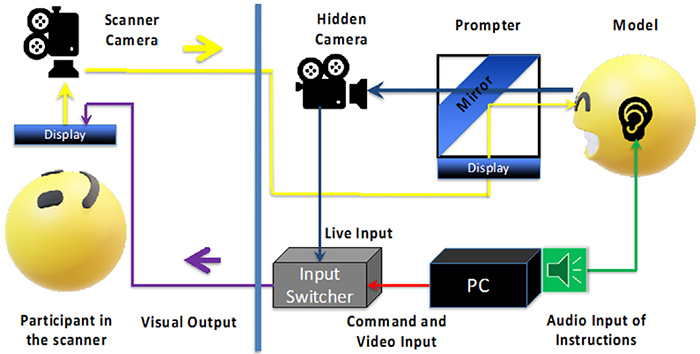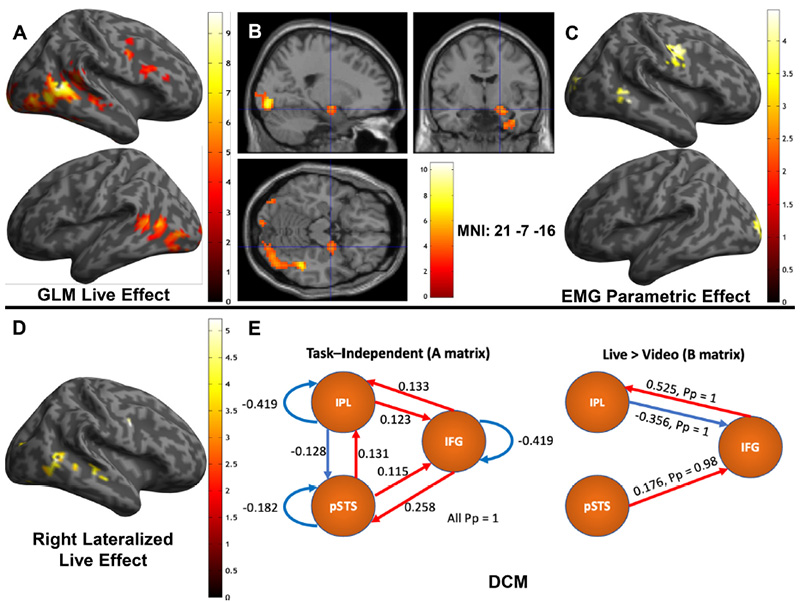SATO Wataru Laboratory
Enhanced mirror neuron network activity and effective connectivity during live interaction among female subjects
(Hsu, Sato, Kochiyama, Nakai, Asano, Abe, & Yoshikawa: Neuroimage)
Facial expressions are indispensable in daily human communication.
Previous neuroimaging studies investigating facial expression processing have presented pre-recorded stimuli and lacked live face-to-face interaction.
Our paradigm alternated between presentations of real-time model performance and pre-recorded videos of dynamic facial expressions to participants.
Simultaneous functional magnetic resonance imaging (fMRI) and facial electromyography activity recordings, as well as post-scan valence and arousal ratings were acquired from 44 female participants.

Live facial expressions enhanced the subjective valence and arousal ratings as well as facial muscular responses.
Live performances showed greater engagement of the right posterior superior temporal sulcus (pSTS), right inferior frontal gyrus (IFG), right amygdala and right fusiform gyrus, and modulated the effective connectivity within the right mirror neuron system (IFG, pSTS, and right inferior parietal lobule).
A support vector machine algorithm could classify multivoxel activation patterns in brain regions involved in dynamic facial expression processing in the mentalizing networks (anterior and posterior cingulate cortex).

These results indicate that live social interaction modulates the activity and connectivity of the right mirror neuron system and enhances spontaneous mimicry, further facilitating emotional contagion.
Return to
Recent Research.
Return to
Main Menu.

